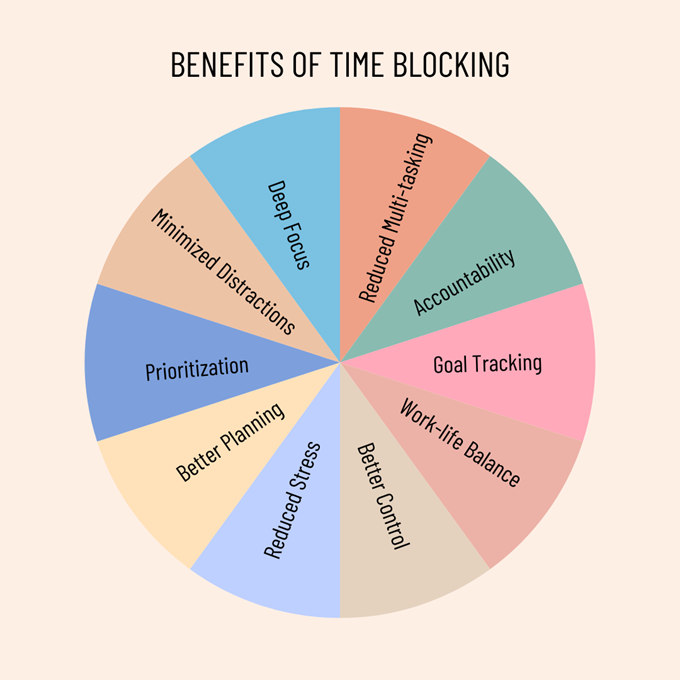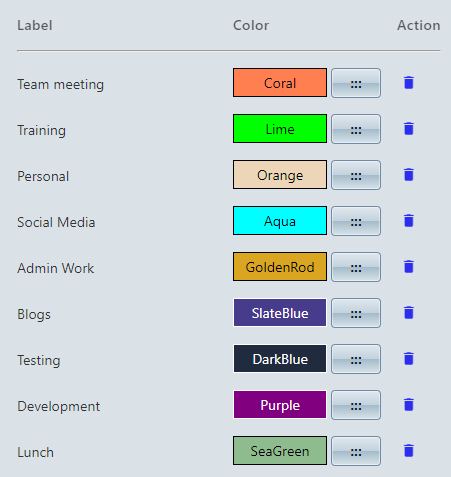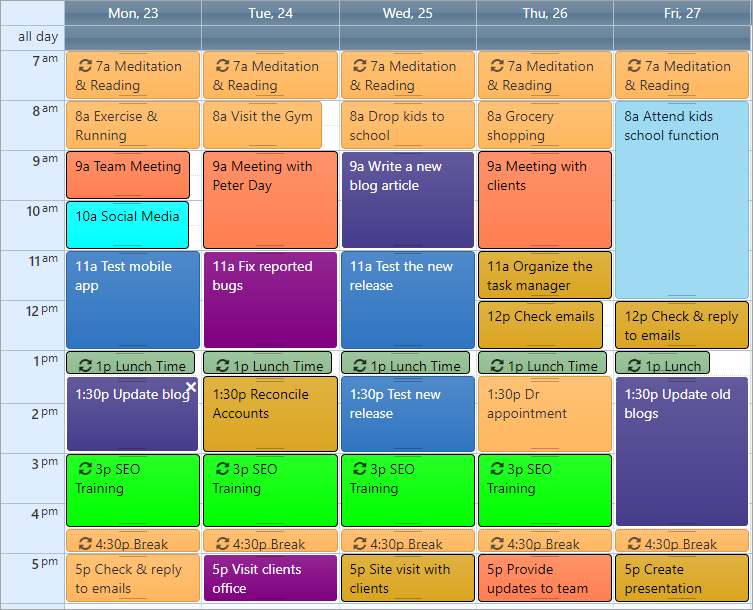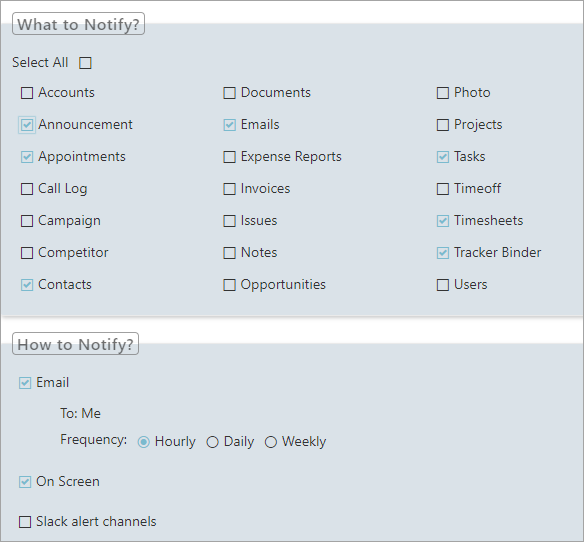What is Time Blocking?
Time blocking is a powerful time management technique that divides your day into specific time blocks dedicated to different tasks or activities. By visually organizing your schedule, time blocking provides a clear overview of how your time is allocated and helps you stay focused and productive.

Many successful individuals, including Elon Musk and Bill Gates, have credited time blocking as a key factor in their productivity. By strategically allocating their time, they accomplish more in less time and achieve remarkable results.

Reasons why Time Blocking works?
Let’s explore the benefits of time blocking and discover how this technique improves productivity and can transform your life:
-
Enhanced Focus and Productivity:
- Deep Focus: Dedicating uninterrupted time to specific tasks can help you achieve a state of deep focus, which can lead to increased productivity and higher-quality work.
- Reduced Multitasking: Time blocking eliminates the distractions of multitasking, allowing you to concentrate fully on one task at a time and improve efficiency.
- Minimized Distractions: With a clear schedule, it is easier to resist distractions and stay focused on your priorities.
-
Improved Time Management and Planning:
- Effective Prioritization: Time blocking forces you to prioritize tasks and allocate time accordingly, ensuring that important activities receive the attention they deserve.
- Better Planning: By estimating the time required for each task, you can create a realistic and achievable schedule for the day.
- Increased Accountability: Having a visual representation of your schedule can hold you accountable and motivate you to stay on track.
-
Reduced Stress and Improved Work-Life Balance:
- Reduced Stress: Knowing that you have allocated specific time for different tasks can reduce stress and anxiety.
- Better Control: Time blocking gives you control over your day and helps you understand where your time goes.
- Work-Life Balance: By scheduling time for both work and personal activities, time blocking can help you maintain a healthy balance and prevent burnout.
-
Goal Achievement and Personal Development:
- Goal Tracking: Time blocking allows you to allocate time for personal goals, such as exercise, learning new skills, or pursuing hobbies.
- Self-Care: By setting aside time for activities that nurture your mind and body, you’ll improve your overall well-being and be better equipped to handle life’s challenges.
Disadvantages of Time Blocking:
Time blocking, while a valuable productivity tool, does have some potential drawbacks:
- Initial Setup and Maintenance: Creating and maintaining a detailed schedule can be time-consuming and requires considerable effort, especially when adjusting to the new system.
- Lack of Flexibility: Time blocking can sometimes limit spontaneity and make it difficult to adapt to changing circumstances. There may be no buffer time to accommodate unexpected tasks or opportunities.
Tips for effective Time Blocking for working professionals:
-
Planning and Preparation:
- Weekly or Daily Planning: Determine whether a weekly or daily time-blocking approach suits your preferences and workflow.
- Comprehensive Task List: Create a comprehensive list of work and personal tasks, ensuring they cover all your responsibilities.
- Prioritization: Utilize the Eisenhower Matrix to prioritize tasks based on urgency and importance, focusing on high-impact activities.
-
Time Allocation and Scheduling:
- Accurate Time Estimation: Estimate the time required for each task, considering previous experiences and potential challenges.
- Peak Productivity: Identify your most productive times and schedule demanding tasks during those peak hours.
- Flexible Scheduling: Include buffer time to accommodate unexpected tasks or meetings, ensuring flexibility and adaptability.
- Personal Time: Allocate time for non-work activities like exercise, meditation, or relaxation to maintain balance and prevent burnout, relieving stress and promoting a healthier work-life balance.
-
Implementation and Review:
- Adherence: Strive to stick to your schedule, recognizing that occasional adjustments may be necessary.
- Time Tracking: Use a time-tracking tool or the Pomodoro Technique to monitor task duration and identify areas for improvement.
- Weekly Review: Conduct a weekly review to assess progress, identify bottlenecks, and adjust your schedule as needed.
-
Additional Tips:
- Break Down Large Tasks: Divide large tasks into smaller, more manageable subtasks to make them less overwhelming.
- Minimize Distractions: Create a focused work environment by minimizing distractions like notifications and interruptions.
- Reward Yourself: Celebrate your accomplishments to stay motivated and maintain a positive mindset.
- Be Adaptable: Be prepared to adjust your schedule as needed to accommodate changing priorities or unexpected events.
How to Use OfficeClip Calendar for Effective Time Blocking?
OfficeClip Calendar is a powerful tool for implementing time-blocking strategies. Here’s a guide on how to use it effectively:
1. Create and Organize Color-Coded Labels:
Use different colored labels to visually categorize tasks and events. This color coding helps in quick identification and prioritization.
2. Create Events and Assign Labels:
Add new events or tasks to your calendar. Assign appropriate labels to each event to categorize them based on importance, project, or other relevant criteria.
3. Import/Export for Flexibility:
Easily import or export your calendar events in CSV or iCal format for backup, sharing, or integration with other tools.
4. Drag-and-Drop for Easy Adjustments:
Use the drag-and-drop functionality to quickly rearrange or reschedule the events as needed, ensuring your schedule remains adaptable.
5. Recurring Events for Consistent Tasks:
Set up recurring events for daily or weekly tasks to automate scheduling and reduce manual effort.
6. Reminders and Notifications for Stay-on-Top:
Set reminders and notifications to keep you updated about upcoming events and deadlines, ensuring you stay on track with your time-blocked schedule.
7. Seamless Integration with Other Tools:
Connect OfficeClip Calendar with Google or Outlook to synchronize events and tasks across platforms seamlessly.
By effectively utilizing these features, you can leverage OfficeClip Calendar to create a structured and efficient time-blocking system that enhances productivity and helps you achieve your goals.

Conclusion:
Time blocking is a powerful tool for enhancing focus, productivity, and accountability. By strategically allocating time for specific tasks, you can eliminate procrastination and ensure timely completion of important projects. This structured approach empowers you to prioritize, manage your workload efficiently, and achieve your goals more successfully.
Data Source:
Deepa Kapoor is an online writer for small businesses. She loves to write on the advancements of new technologies and how it affects our lives. She always explores ways to make small businesses more profitable. When not writing, she enjoys reading books and cooking exotic traditional food.







